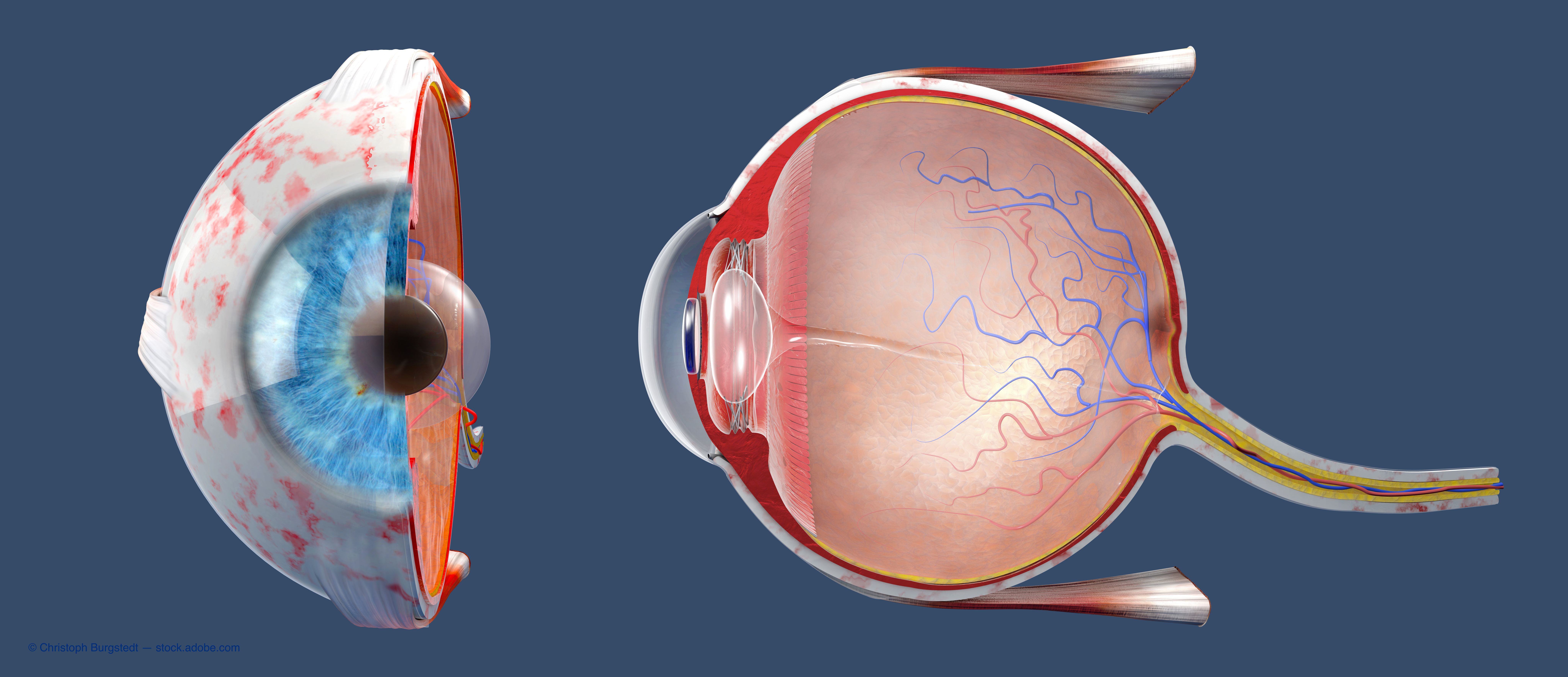- COVID-19
- Biosimilars
- Cataract Therapeutics
- DME
- Gene Therapy
- Workplace
- Ptosis
- Optic Relief
- Imaging
- Geographic Atrophy
- AMD
- Presbyopia
- Ocular Surface Disease
- Practice Management
- Pediatrics
- Surgery
- Therapeutics
- Optometry
- Retina
- Cataract
- Pharmacy
- IOL
- Dry Eye
- Understanding Antibiotic Resistance
- Refractive
- Cornea
- Glaucoma
- OCT
- Ocular Allergy
- Clinical Diagnosis
- Technology
VA and visual function go the way of ocular inflammation
Tool for quantifying measures may predict outcomes for patients.

Reviewed by Cindy Chen, BA, and Sunil Srivastava, MD
Physicians may have developed a new tool for quantifying inflammation associated with uveitis, i.e., an automated imaging-based algorithm to correlate the visual acuity (VA) and the National Eye Institute Visual Function Questionnaire-25 (NEI VFQ-25) scores in uveitis clinical trials as a surrogate outcome measure.
Current measures of inflammation are limited because they are ordinal and subjective, according to Cindy Chen, BA, of the Cleveland Clinic’s Cole Eye Institute in Ohio.
Related: Strategies to address challenging ocular infections
She and a team of colleagues have been working on automated and semiautomated imaging-based quantifications of inflammation to produce continuous and objective measures of intraocular inflammation that are reliable and reproducible.
The goal is to determine how changes in the measures affect visual function.
Quantifying inflammation
The investigators undertook a prospective observational case series, the Imaging Quantification of Inflammation study, that included 86 eyes of 43 patients with active uveitis who were followed for 6 months.
The patients underwent standard clinical examinations and optical coherence tomography (OCT), anterior-segment OCT (AS-OCT), and ultra-widefield fluorescein angiography (UWFFA) imaging at baseline and 1, 3, and 6 months and received standard-of-care medications.
Their VA was measured, and the patients completed the NEI VFQ-25.
Related: Seeking a new frontier with intraoperative OCT
Investigators created customized automated software that can continuously image and measure intraocular inflammation, specifically anterior-chamber cell quantification with AS-OCT, UWFFA leakage quantification, and OCT fluid quantification, with the focus on the latter 2 measures.
They then correlated the imaging-based measures of ocular inflammation with the VA and visual function scores.
Chen was able demonstrate the method of semiautomated quantification of vascular leakage using UWFFA.
Using this method, the software developed the total leakage index, defined as the total leakage area divided by the total region of interest analyzed.
They also devised a macular-centered retinal leakage index; the software provides an image with 3 regions of interest circled, with 1 representing the central 3-disc diameters, 2 representing 6-disc diameters, and 3 representing 9-disc diameters.
Related: Improving macular pathology detection in telemedicine screening
With semiautomated volumetric fluid analysis using spectral-domain OCT, a fluid index was generated that was the sum of the intraretinal and subretinal fluid divided by the retinal volume from a 6-mm cube scan, Chen said.
Study results
Forty-three patients (average age, 46 years) were included in the study. The average logarithm of the minimum angle of resolution (logMAR) VA at baseline was 0.22 and 0.25 at 6 months. Frequent diagnoses included idiopathic uveitis, sarcoid uveitis, and birdshot chorioretinopathy.
“We found that the OCT fluid index correlated moderately with the logMAR VA at all evaluations,” Chen said. “Worsening fluid index positively correlated with worsening VA (r = 0.4, P < 0.001).”
The total retinal leakage index on UWFFA also was correlated moderately with the logMAR VA at all visits. The worsening total retinal leakage index was correlated positively with worsening VA (r = 0.4, P < 0.001).
When the investigators focused on macular leakage at the 3-disc diameter on UWFFA, it was determined that leakage moderately correlated with logMAR VA as well (r=0.489, P<0.001).
Related: Visualization with en face OCT offers value for ophthalmologists
“The highest correlation between the macular leakage in the central 3 disc diameters and the worsening logMAR VA was seen at baseline in patients with active uveitis (r = 0.617, P < .001), she said.
Taking a closer look at the visual function scores indicated that the total retinal leakage index was mildly correlated with the visual function at all visits.
The higher total retinal leakage was negatively correlated with worsening visual function (r = –0.156, P = 0.015).
Similarly, macular leakage in the central 3 disc diameters was mildly correlated with visual function. Greater macular leakage was correlated negatively with a lower VFQ score (r = –0.237, P = 0.0002).
Investigators found that the total retinal leakage was mildly correlated with the OCT fluid index. A greater total retinal leakage index was positively correlated with a greater fluid index (r = 0.272, P < 0.001).
Related: Risk awareness helps identify medication-induced retinal toxicity
Macular leakage in the central 3 disc diameters was correlated mildly with the OCT fluid index. A greater percentage of macular leakage was positively correlated with a greater fluid index (r = 0.343, P < 0.001), Chen reported.
--
Cindy Chen, BA
E: chenc5@ccf.org
This article is adapted from Chen’s presentation at the American Academy of Ophthalmology’s recent virtual annual meeting. Chen has no financial interest in this subject matter; the study was funded by Santen Inc.
--
Reference
1. Ehlers JP, Wang K, Vasanji A, Hu M, Srivastava SK. Automated quantitative characterisation of retinal vascular leakage and microaneurysms in ultra-widefield fluorescein angiography. Br J Ophthalmol. 2017;101:696-699. doi:10.1136/bjophthalmol-2016-310047

